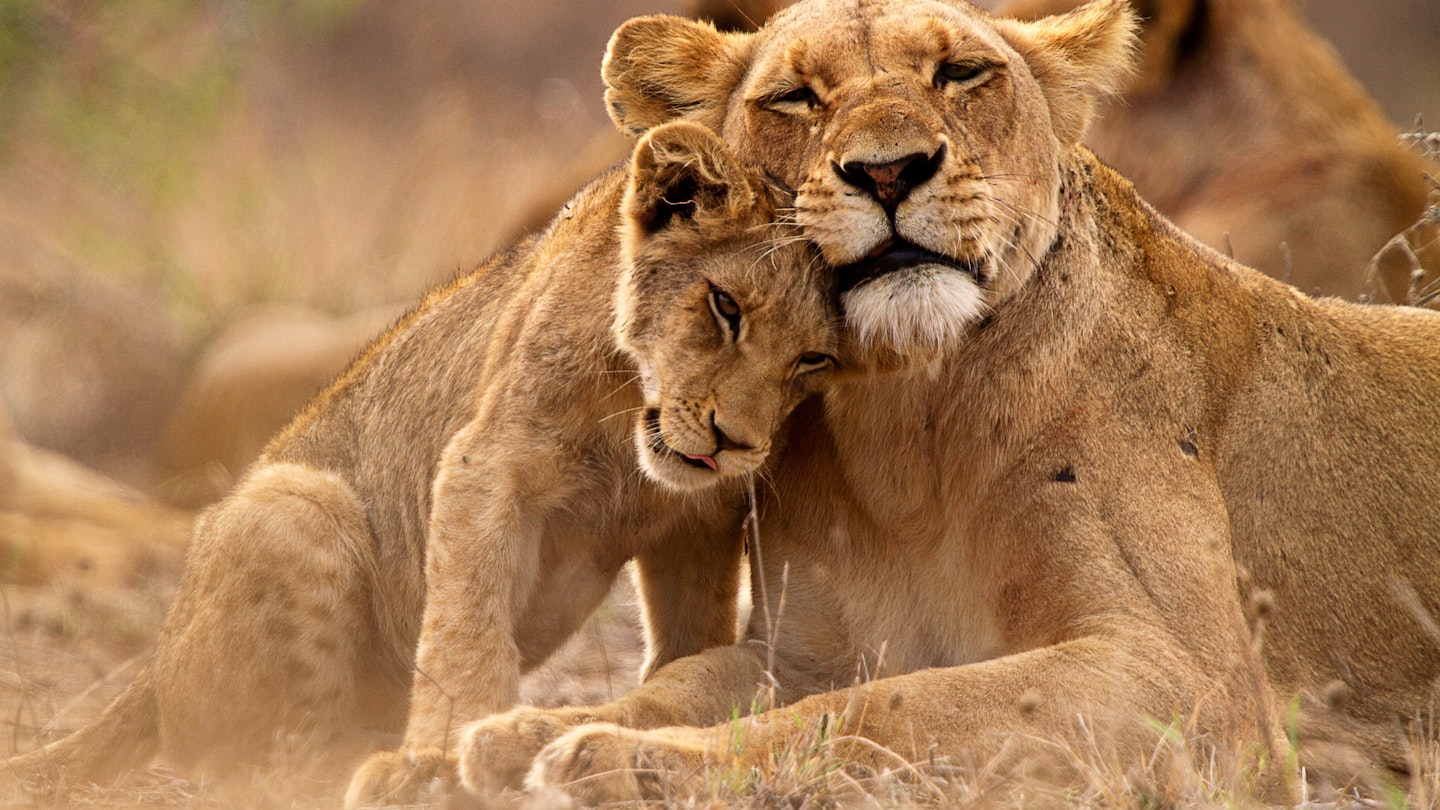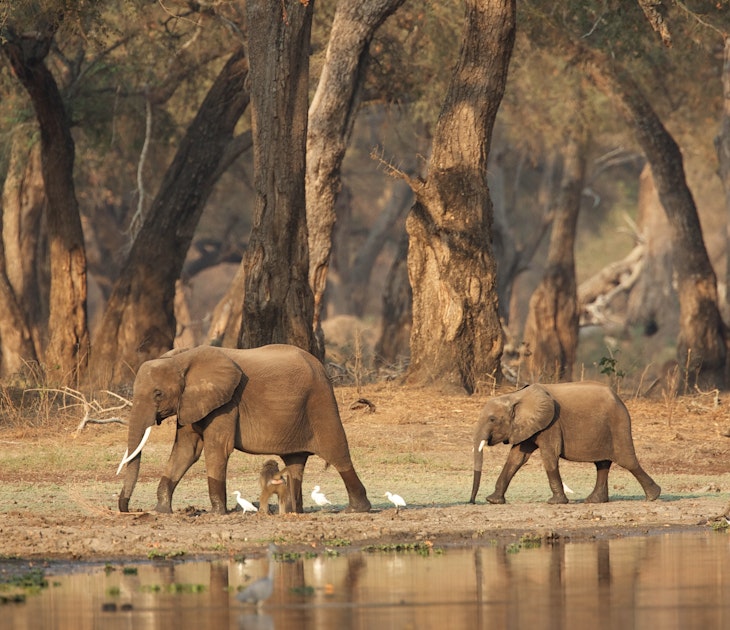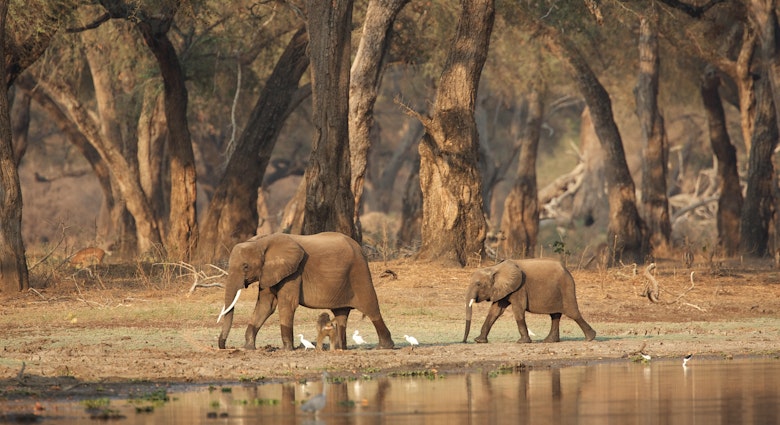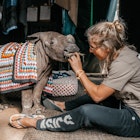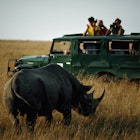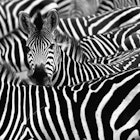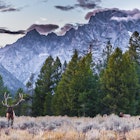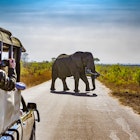Few experiences in Africa live longer in memory than the first time you see a lion.
Lithe and ferocious, lions are without rival as Africa’s apex predator and carry on their body what one lion expert described as an “aura of impending violence”. The epitome of wild Africa, they are also the most sought-after prize on any safari to East Africa or Southern Africa for their combination of grace and grandeur, charisma and gravitas. Here we introduce you to the king of Africa’s cats, and tell you where's best to see them.

Africa’s biggest cat
Second in size among felines only to the tiger, lions are easily Africa’s largest cat species. Males can be over 2.5m long, 3.5m if you include the tail. The heaviest wild male lion recorded weighed in at a rather hefty 272kg. Females generally weigh between 110kg and 168kg. Lions can eat up to 25% of their own body weight in a single session and, on such occasions, even male lions can appear pregnant, so swollen are their bellies.
Female lions can live up to 18 years in the wild; males have been known to live up to 16, but rarely make it past 12. Lions can live up to 27 years in captivity.
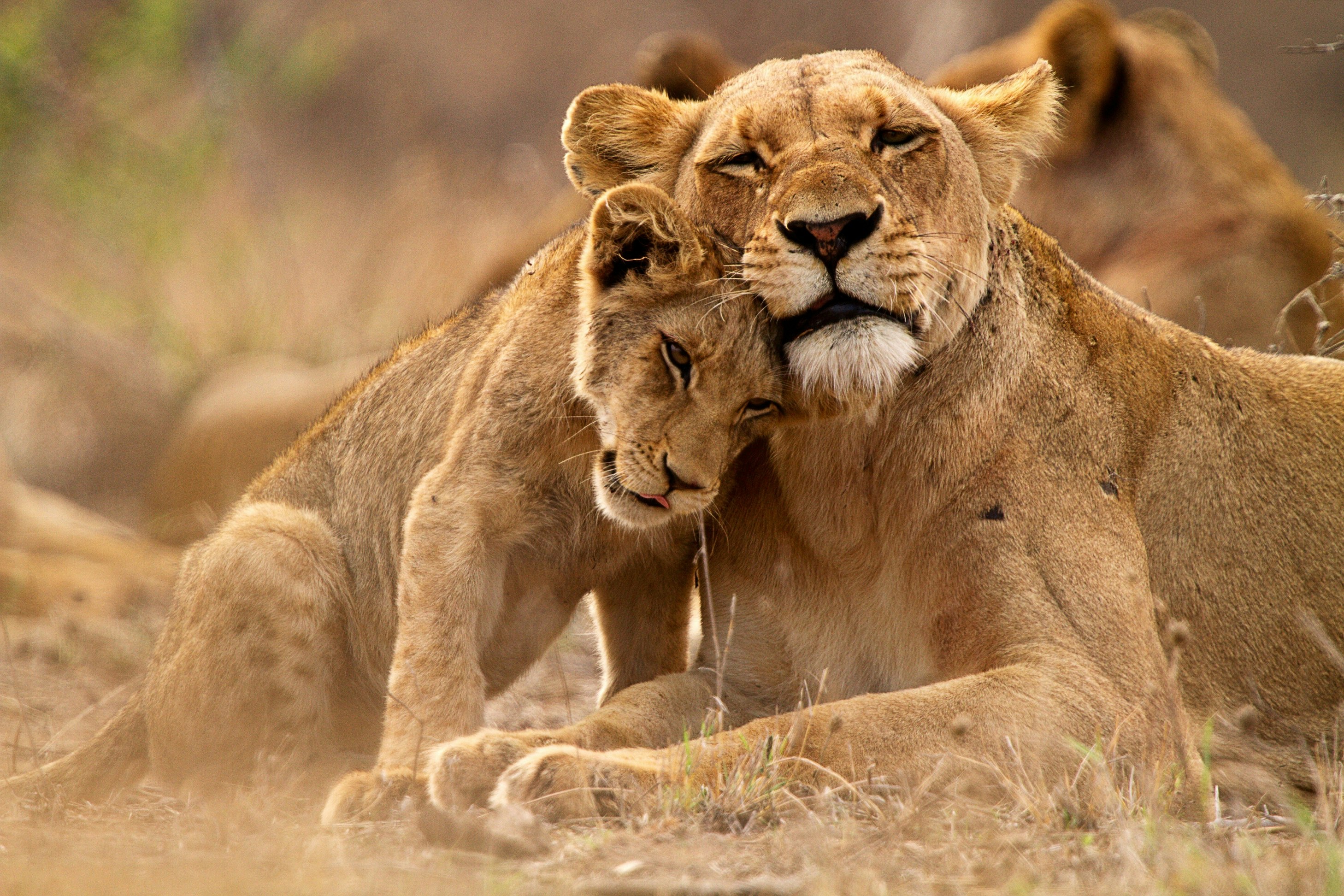
A social beast
There are 38 species of wild cats in the world, and the lion is the only social cat among them. Lions live in prides which can include more than 30 individuals, although many prides are much smaller, especially in areas where pressure from human populations is high, or in regions where prey is scarce.
A multi-generational sisterhood of lionesses forms the core of nearly every pride. Females born into the pride will, in many cases, remain with their sisters and mothers, aunties and grandmothers throughout their lifetimes. Together this formidable team of lionesses raises the pride’s cubs and inhabits a defined home range that can be as small as 35 sq km, or as large as 1000. They hunt as a team, defend their territory together against intruders, and raise cubs in a collective creche-like environment.
Safari animals: the story of rhinos (and the best places to see them)
Lion pregnancies last between three and four months and, when they are ready to give birth, lionesses retreat to a secluded place where the cubs are born. The average size of a litter of lions is between two and four, but as many as seven have been recorded. Cubs cannot open their eyes until around ten days after birth, and mothers keep their cubs hidden until they are around eight weeks old. Despite the protection afforded by the pride, lions are particularly vulnerable during their first two years of life.
When they reach adulthood, which for lions usually occurs between two and four years of age, the young males will leave their natal pride and search for a territory of their own – this is nature’s way of ensuring that sexually mature males do not mate with their own relatives. They will often join with brothers or cousins to form a coalition and, largely nomadic, these dispersing males will wander until they can successfully challenge a resident male (or males) for control of a pride. Once in control, they will patrol their territory, sometimes remaining on their own with the other coalition male(s), sometimes hanging out with the pride females and cubs.
Where to see rhinos on safari in Africa in 2022
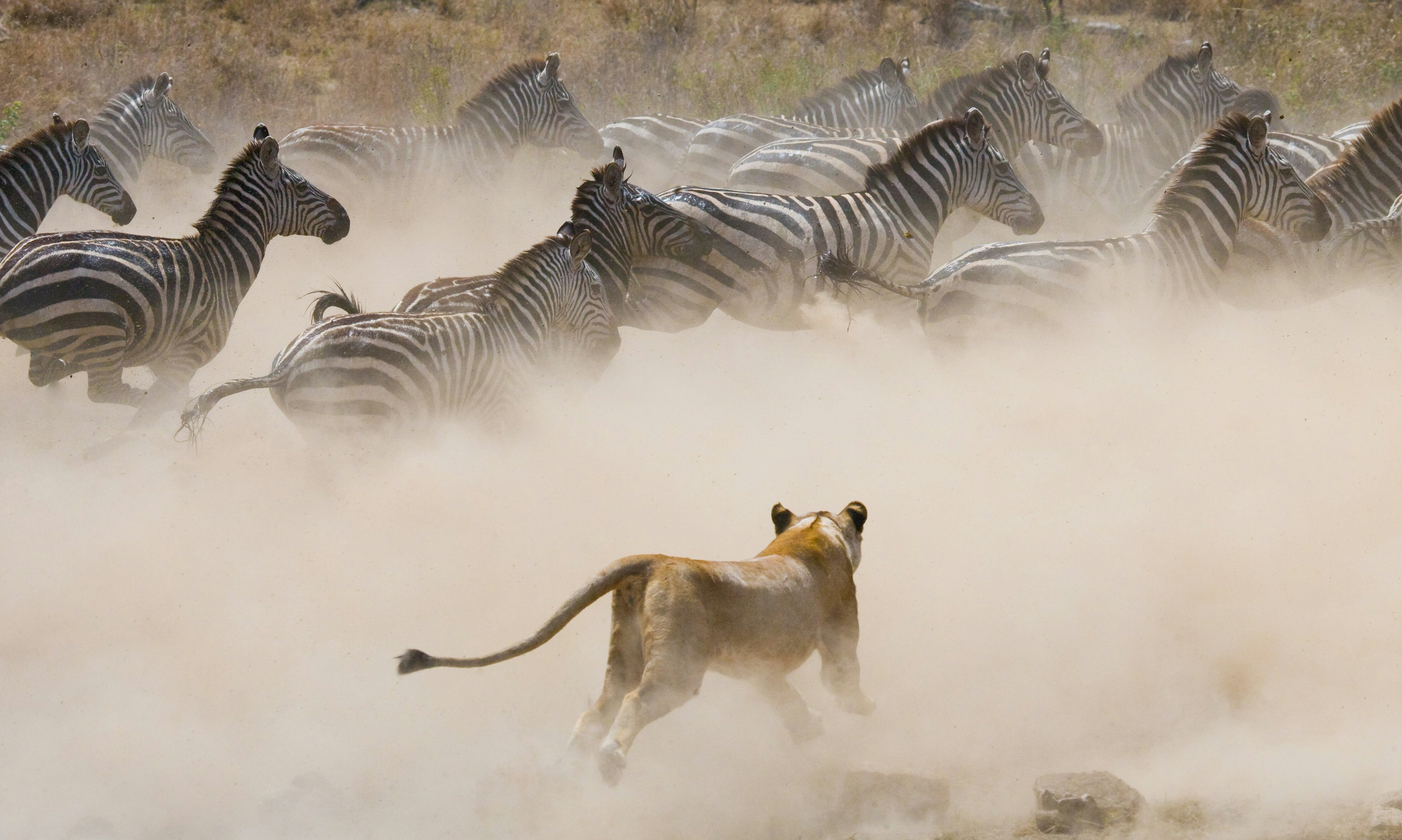
What lions eat
Lions are great opportunists and will eat springhares, elephants and most animals in between. Their favorite prey varies from one region to the next, but their diet often includes zebra, warthog, buffalo, wildebeest, impala, gemsbok, and warthog. One pride of lions even learned to hunt seals along Namibia’s northern coast. Lions also hunt giraffes – this is a particular specialty in Tanzania’s Selous Game Reserve. Lions commonly hunt elephants in Zimbabwe’s Hwange National Park, especially late in the dry season (September and October); the weight imbalance between lions and elephants, which can weigh 3.5 tons, is the greatest disparity between predator and prey in the animal kingdom. Even one-tonne buffaloes can weigh more than seven times that of the adult lioness bringing it down.
A day on safari in Africa: what you can expect in camp and in the wild
Although lions are skilled hunters and can reach a top speed of 93km/h, they rely on short bursts of speed rather than stamina – a typical lion hunt requires that lions stalk their prey to within around 15m before launching their attack. And despite such skills, their recorded success rate as hunters can be as low as 15% and never higher than 38.5% – in other words, significantly more than half of all lion hunts end in failure. And contrary to popular belief, lions routinely scavenge a significant proportion of their meals.
Lions will also eat domestic livestock, especially cows, and donkeys. With human beings and lions living in ever-closer proximity, such killings are a major cause of human-lion conflict, with many lions killed in retaliation.
Protecting rhinos from poachers in Africa - what it's like working on the frontline

King of the jungle?
Contrary to popular lore, the lion has never been king of the jungle: they are most at home out on savannah plains or in open woodlands. Lions can adapt to many different habitats, from dense woodlands in Ethiopia and Uganda to semi-arid environments such as Botswana’s Kalahari and the Skeleton Coast of northern Namibia. Although lions, like most cats, aren’t particularly fond of water, they have learned to become strong swimmers in Botswana’s watery Okavango Delta.
Are you ready for a self-drive safari?
The largest lion populations are in East and Southern Africa; some estimates suggest that half of Africa’s lions live in Tanzania. There are small lion populations elsewhere, including the Gir Forest, in the Indian state of Gujarat, and West Africa (where the lion is listed as Critically Endangered). The largest lion populations are in Selous Game Reserve and Ruaha National Park (Tanzania), the Serengeti-Masai Mara (Tanzania and Kenya), Kruger National Park (South Africa) and the Kavango-Zambezi Transfrontier Conservation Area (which spans Angola, Botswana, Namibia, Zambia and Zimbabwe).
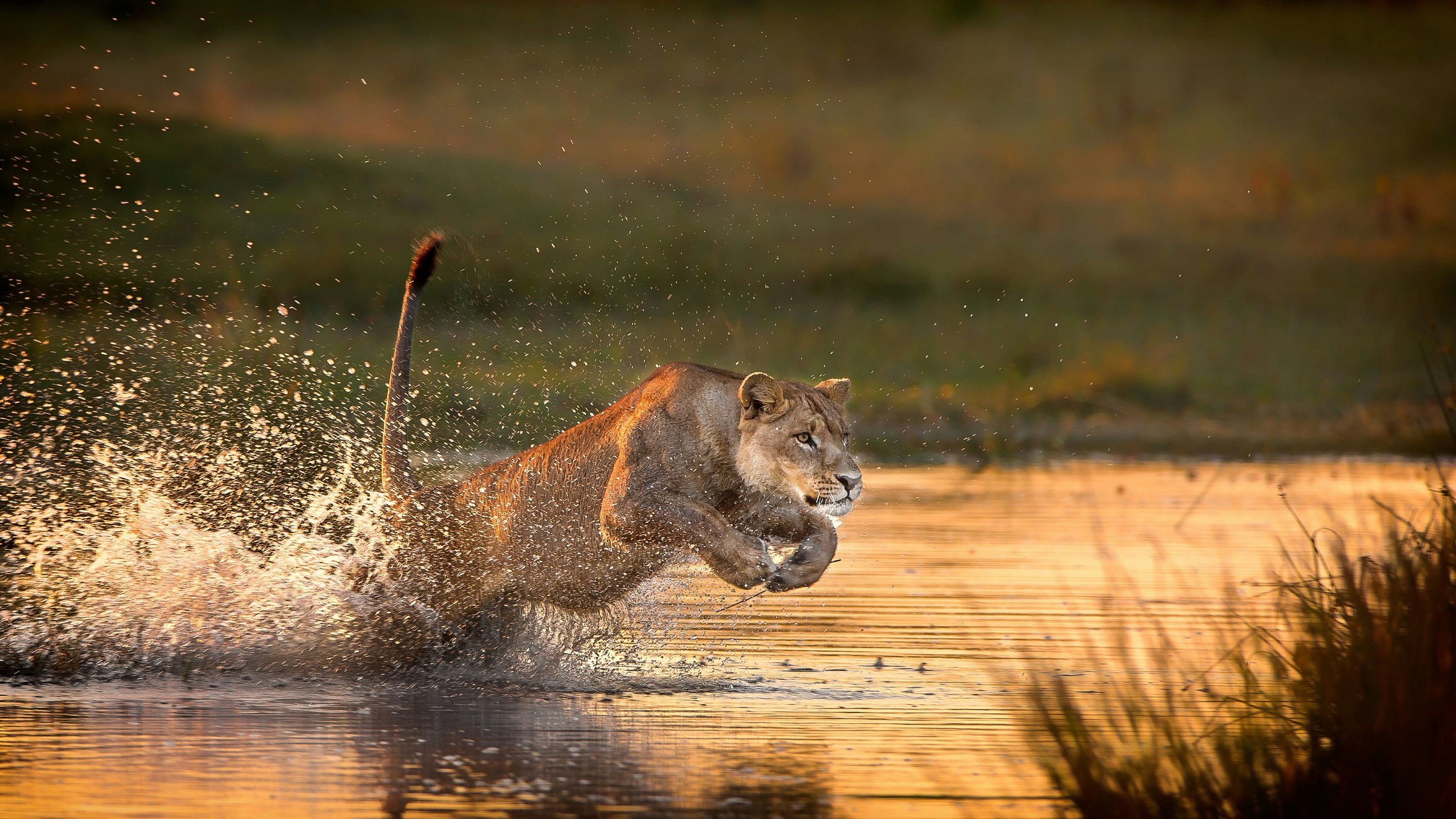
The best places to see lions on safari
Botswana
Northern Botswana has excellent lion-watching territory, including Moremi Game Reserve and elsewhere in the Okavango Delta, Chobe National Park (especially the Savuti region) and the Central Kalahari Game Reserve.
Kenya
Kenya is home to around 2000 lions, with sightings possible in Masai Mara Game Reserve and the surrounding community conservancies, Amboseli, Tsavo East and Tsavo West and Lake Nakuru national parks, as well as Samburu National Reserve and the conservancies of the Laikipia Plateau.
Wild times: a guide to the best national parks in Kenya
Namibia
There aren’t many places in Namibia where you can see lions, but Etosha National Park in the country’s north is a brilliant exception. Khaudum National Park and the emerging parks of the Zambezi Region (formerly the Caprivi Strip) are quieter alternatives.
Beyond safaris, these are Namibia’s most awe-inspiring experiences
South Africa
Lions have been reintroduced onto many private reserves in South Africa. Otherwise, Kruger National Park is one of the world’s best places to see lions. Madikwe Game Reserve and Kgalagadi Transfrontier Park are less busy but also filled with lions.
The top 19 beaches in South Africa for sand, surf and scenery
Tanzania
This is prime lion-viewing land, and includes the Serengeti National Park, Ngorongoro Crater and Tarangire National Park in the north, and Selous Game Reserve and Ruaha National Park in the south.
Tanzania: an epic safari following the Serengeti's Great Migration
Zambia
A much-underrated lion-watching destination, Zambia’s South Luangwa National Park is excellent, with North Luangwa and Kafue national parks offering wilder experiences.
Unforgettable adventure activities in Zimbabwe and Zambia
Zimbabwe
Hwange National Park is one of Africa’s best national parks and lion sightings are common. Mana Pools is another park with a healthy lion population that you can watch while on a walking safari.
8 vital things to know about South African safaris
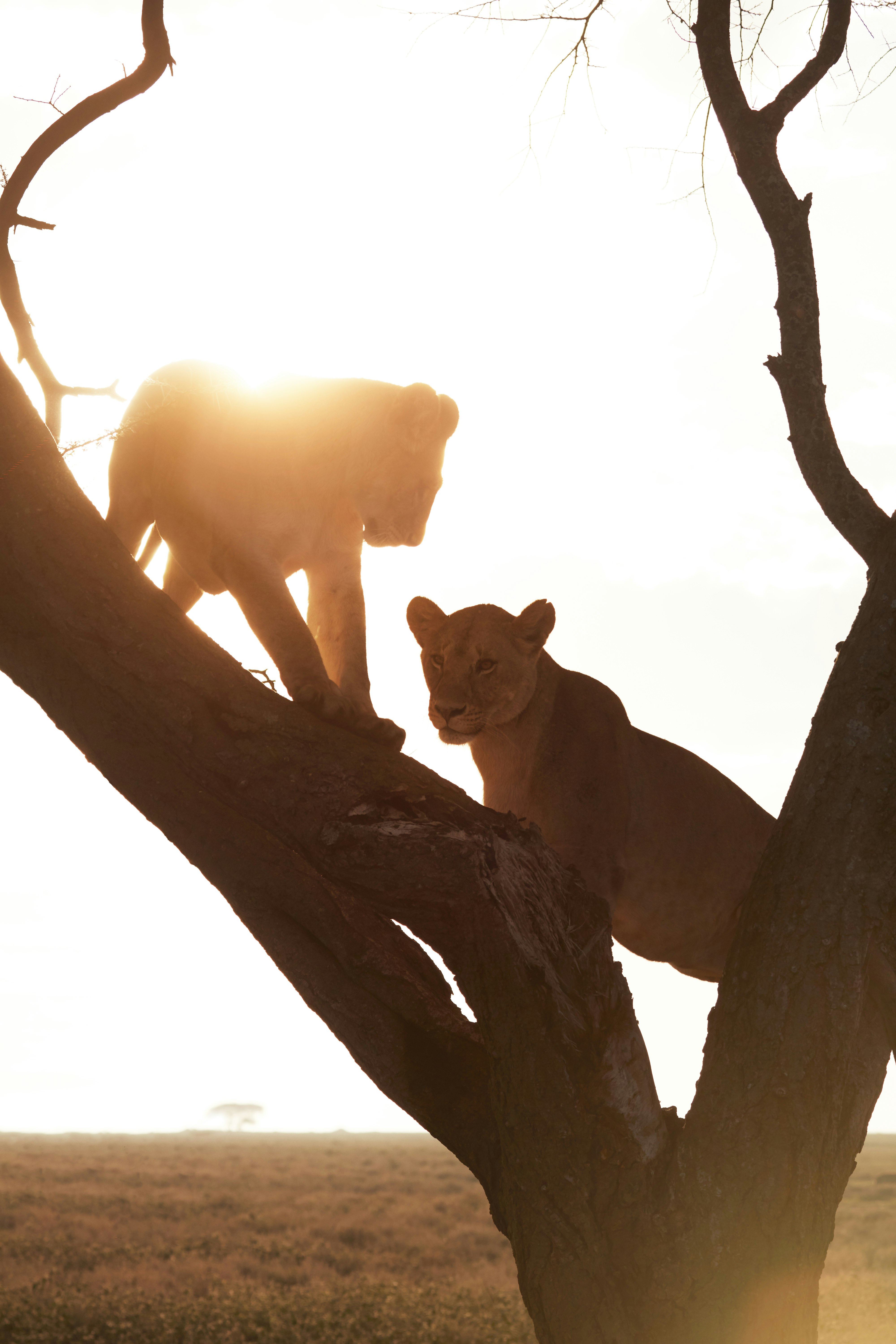
Lions in peril?
There are more rhinos, more elephants and more gorillas than there are lions in Africa. No one really knows how many lions there were in Africa a century ago, but most estimates suggest that it was more than a million. A study in 2019 estimated that there were just 22,509 left on the continent and that lions have disappeared from 95% of their former range.
Many lions live in isolated populations that may not be viable in the long term, and just 40% of Africa’s lions live within the boundaries of protected areas. Just eight countries are believed to have at least 500 adult lions: Tanzania, Botswana, Kenya, Mozambique, South Africa, Zambia, Zimbabwe and Namibia.
The lion is listed as Vulnerable by the International Union for the Conservation of Nature (IUCN).
